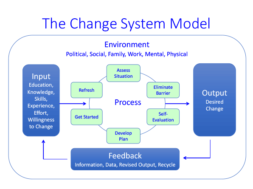
Free Community College for All is a Bad Idea for America
The following is a research paper submitted by a career college student who formally attended a community college.
On January 9, 2015, in The State of the Union Address, President Obama announced his plan to make community college free for all Americans, which appeared for many as a bold step towards leveling the playing field between the rich and the poor. However, not everyone is cheering, many feel that the President Obama’s plan is bad for America. Some, even supporters of the plan, believe that the initiative did not go far enough, convinced that low-income students need more support than just free tuition to succeed. However, many fiscal conservatives believe that the president’s plan already costs too much money, is not focused on helping those who really need assistance – and it is wrong-headed that the President would create such an important plan that is critical to America’s success, solely relying on only one sector of America’s educational landscape – a community college system with such a poor track-record of graduating its students. Very disconcerting is the accusation made by many private sector education leaders contending that the private sector is the target of the misuse of government power to distort the truth of a good track-record – using accusations, isolated incidents and innuendos as tools to strip government funding away from the sector – purposefully excluding private sector education from the President’s community college plan.
These sector leaders argue that a one-size-fits-all community college solution would eliminate student choice, and leave many students who find it difficult to succeed in a public education environment without a degree.
This paper explores three arguments supporting the fact that President Obama’s free community college for all is bad for America: whether the President’s proposal stops short of its goal to help low-income Americans earn a degree; whether the proposal goes too far, is too expensive and is misguided as conservatives proclaim; and finally whether the Obama administration purposefully and wrongfully leaves the private sector out of the plan.
Ashley’s story1 : Nothing made Ashley happier than getting lost in her imaginary world. The world she created where she was the beautiful princess who met the dashing young prince and she was the one who lived happily ever after. For it was her dreams that got her mind off of the filth and stench that surrounded her as she cleaned up after everyone else’s mess.
Ashley once had hopes of being an artist in an advertising agency. That all came to an end when she found out that she was pregnant. She was only 17, just out of high school and she had fallen in love. But now, eight years later, she and her son Aaron lived in a tiny room in the back of a small run-down hotel where she worked as a maid. She despised her job. And she hated her boss. But the job gave her and Aaron a roof over their heads and enough income so they could survive.
It was a blistering hot August day. Ashley remembered that day because it was the day that she finally got the courage to enroll in college. The campus was a short bus ride away. Her dreams of working in advertising seemed closer than ever before. Ashley had done her research and the community college she chose had an advertising program with a focus on graphic design. She remembered that August day because she was also so scared. She was scared that it had been so many years since she had been in school. Ashley was scared that she would not be able to succeed. But it was Aaron who gave her the courage to try. She knew that he would have no chance in this world if she did not get a better job.
When she arrived at the school, Ashley was overwhelmed when she got off the bus. Where was she to go? What was she to do? There were buildings everywhere and people flooded the walkways. Ashley felt like everyone knew where they were going and what they were doing – but her – for at that moment, Ashley felt more alone, and more lost, than she ever felt in her life. After hours of going from one line to the next, being told to go to one room, only to find out that she had not filled out the correct paperwork, and then being told to go someplace else – after hours of long lines and confusion, Ashley was finally enrolled in college, and amazingly, it did not cost her a dime. She qualified for a Pell Grant, which paid for her tuition with a bit left over for books and supplies. Ashley was so excited. She was in college!
But the excitement went away moments later when she realized that she had a problem. The classes that she needed were at two different campuses, which had her bouncing back and forth from one campus to the other every day. The buses ran on the half hour and it took two buses to go between campuses. How, Ashley thought, would she get through school, hold onto her job and take care of Aaron during the two years it would take her to graduate?
Ashley, like many other students, eventually dropped out. It was either that or get fired. And Ashley’s job as a maid was all that kept her and Aaron from being on the streets.
Even many supporters and well-known scholars have taken issue with President Obama’s plan as there are many students, students just like Ashley, who need more help than just free tuition. Goldrick-Rab (2015) was “thrilled” with the President’s plan, but felt that it was only a beginning – offering several suggestions, which included expanding the program beyond community colleges to include public 4-year colleges for those who wanted to go directly into a school to obtain their bachelor’s degree. Additionally, Godrick-Rab believed that it was important that the plan go beyond free tuition to include student’s books, supplies, and living expenses while they attended school, so low-income students such as Ashley, could focus on school, and not worry about making a living, making it easier to graduate and earn their degrees (Goldrick-Rab, 2015).
Butler (2015), a Senior Fellow in Economic Studies at the Brookings Institution, also wrote that the plan only covered free tuition, also believing that free tuition would not accomplish the President’s goal. Butler’s blog contained a link to a November 2014 document published by the American Association of Community Colleges, stating that tuition was only 21 percent of a student’s estimated total expenses of $16,325 for fiscal year 2014-15 in two-year public institutions (Phillippe & Tekle, 2014).
Butler contended that the already expensive $60 billion plan was fundamentally flawed for many reasons, suggesting that “President Obama would be much wiser to use his political capital to spur competition and real cost reduction in higher education rather than subsidizing community college tuition” (Butler, 2015, para. 13).
The White House’s January 9th advance press release before President Obama’s State of the Union Address stated:
Today the President is unveiling the America’s College Promise proposal to make two years of community college free for responsible students, letting students earn the first half of a bachelor’s degree and earn skills needed in the workforce at no cost. This proposal will require everyone to do their part: community colleges must strengthen their programs and increase the number of students who graduate, states must invest more in higher education and training, and students must take responsibility for their education, earn good grades, and stay on track to graduate. (The White House Office of the Press Secretary, 2015, para. 2.)
Leaping off the page of the press release – was the critical point – that community colleges needed to do a much better job of graduating their students.
The White House had plenty of reason to be worried about community college graduation rates. Paul Fain (2015), staff writer for InsideHigherEd.com, pointed out that “President Obama’s free community college proposal has a direct ancestor in a program Tulsa Community College began in 2007” (Fain, 2015, para. 1). Sadly, Tulsa Community College was listed on The Department of Education’s College Navigator as only graduating 14 percent of their full-time, first time students, within 150 percent of the normal time to completion for their program (College Navigator, 2015).
Further, The Department of Education website quotes data from Digest of Education Statistics 2013, table 326.20, which shows that only 20 percent of the students seeking degrees or certifications from U.S. public two-year degree granting institutions were able to complete those degrees within three years (Institutional Retention and Graduation Rates for Undergraduate Students). These alarming graduation rate statistics are often cited when critics question the Obama Administration’s wisdom of centering an education program of such critical importance on a community college model – a model that has such a horrendous track-record of graduating its students.
Many opponents also argue that President Obama’s plan should have included private sector schools, colleges and universities – given the fact that the sector’s exemplary two-year graduation rates are more than three times that of two-year community colleges (62 percent versus 20 percent) (National Center for Education Statistics, 2013). Additionally, many in the private sector are convinced that the President’s wide-sweeping community college proposal, which excludes the private sector, is the culmination of six years of what they feel have been unfair attacks hurled against them, fortified by exaggerated, one-sided media stories.
Private sector advocates believe that the administration is intent on painting the private sector with a broad negative brush, to decrease, or even eliminate federal and state funding going to private sector institutions.
One of the most egregious examples leaders in the private sector point to as damage caused by the Obama administration’s attacks on the sector is the administration’s virtual shutdown of Corinthian Colleges, Inc., a for-profit publically traded corporation. The Wall Street Journal blasted the Obama Administration with a July 25, 2014 editorial titled “Obama’s Corinthian Kill, How regulators used Accusations to ruin a for-profit educator.” The article described the dismantling of one of the largest education companies in the United States as a coordinated attack by the Department of Education, The Securities and Exchange Commission, The Consumer Financial Protection Bureau, The Department of Justice, and others. “None of the federal agencies has brought legal charges, but they have collectively destroyed Corinthian’s bottom line” (Obama’s Corinthian kill – how regulators used accusations to ruin a for-profit educator, 2014). Only time will tell how this and other administration attacks will end.
Amazingly, with all of the attacks on the nation’s private sector educational community, a February 2014 report developed by Public Agenda can actually be found on the Department of Education’s website. This report cited a survey of prospective students, current students and graduates of for-profit colleges, focused on the values that those surveyed placed in their institutions. The report concluded that although there was concern over the high cost of tuitions, only a small number of alumni questioned the ultimate value of the credentials they earned. Surveys also revealed that students at for-profit institutions were extremely happy with the help they received from their schools. The end of the report voiced Public Agenda’s conclusion, suggesting that community colleges needed to offer community college students the same kinds of student-valued-services found in for-profit schools, even though tuitions would most-likely have to be increased (Hagelskamp, Schleifer, & DiStasi, 2014).
So the question remains – why is the Obama Administration and others so vehemently opposed to private sector education – pushing schools to the point of closing, and creating crippling regulations directed squarely at the sector – even though students of private sector schools are very supportive of their schools? Perhaps as private sector leaders suggest – to make Americans upset – so upset that they would not object – or perhaps even cheer that the Obama administration was shifting federal and state funds from the private sector to the community colleges.
Finally, and equally as troubling for many critics, is the concern that community colleges’ expensive tax-supported bureaucratic structures, similar to most government entities, are not nimble enough and quick enough to respond to the evolving needs of students, employers or society as a whole. As businesses innovate and technology requirements change, many question whether community colleges will have difficultly adapting their programs fast enough so students are trained properly, and job-ready enough, to the satisfaction of corporate America – the companies that will be hiring the bulk of the community college graduates.
In writing about the crisis in American education and its future, Blumenstyk (2015) described many of the large institutions’ battles as “problems of their own making – bureaucracies run amok…” (Blumenstyk, 2015, p. 152). Blumenstyk’s comments were not solely focused on community colleges – and these particular issues – but these observations only reinforce the fact that community college infrastructures are so large and complex that it is difficult for public two-year colleges to continually adjust, and provide up-to-date programs that are desperately needed by students to be workforce-ready in the future.
On the opposite side of the education landscape, private sector colleges are driven by success, measured by student outcomes and institutional profit. As a result, private sector institutions must continually upgrade their programs, innovate, and experiment with new ways for students to learn. So, unlike public institutions that do not have market-force urgency to improve, private sector schools must do everything that they can to succeed, or risk losing students and going out of business.
Blumenstyk (2015) predicts that educational innovations and potential changes in education that are on the horizon, but states that it is impossible to know what will succeed:
Frankly, it is impossible to say with certainty how higher education will change, and one should have serious doubts about anyone who says they know… And it is vital to recognize that the risks in getting it wrong, in rushing headlong toward the next shiny thing without careful consideration of what, and more importantly, who, will be left behind are too great (Blumenstyk, 2015, pp. xvii.).
Ashley and her son Aaron, for that matter, all of the Ashley’s who have sons and daughters and are struggling to get by like Ashley, are the kinds of people Blumenstyk worries about being left behind.
Did the President’s proposal go too far, or not far enough? Will this $60 billion plan level the playing field, or is this plan misguided, not taking into account the entire landscape of the American educational system and the diversity of its citizens? Opportunity and Freedom of choice are hallmarks of America. Congress, understanding that people are different and have varied needs – and understanding that schools, colleges and universities are equally as diverse, serving students in their own unique ways – chose to create legislation that made qualified private sector schools, colleges and universities eligible to accept federal financial aid. The Obama administration’s attack on private sector education and the new proposed community college tuition-free plan takes away student choice, is too costly, and does not go far enough helping those who really need the help to succeed – which unquestionably makes the President’s plan wrong for American students and wrong for America.
Citation
1Note this is a fictitious story.
References
Blumenstyk, G. (2015). American higher education in crisis? What everyone needs to know. New York: Oxford University Press.
Briefing The future of universities – The digital degree. (2014, June 28). The Economist, p. 20 22. Retrieved from http://www.economist.com/news/briefing/21605899-staid-higher-education-business-about-experience-welcome-earthquake-digital
Butler, S. M. (2015, January 20). Obama’s SOTU Free College Plan is Bad for Poor Americans. Brookings. The Brookings Institute. Retrieved April 15, 2015, from http://www.brookings.edu/research/opinions/2015/01/20-obama-free-community-college-bad-idea-sotu-butler
(2015). College Navigator. U.S. Department of Education Institute of Education Sciences National Center for Education Statistics. Retrieved April 14, 2015, from http://nces.ed.gov/collegenavigator/?q=tulsa+community+college&s=all&id=207935#retgrad
Community Colleges at a Glance. (2015, January 9th). Inside Higher Education. Retrieved from http://chronicle.com/article/Community-Colleges-at-a-Glance/151125/
Fain, P. (2015, March 5). Free Community College: It Works. InsideHigherEd.com. Retrieved April 14, 2015, from https://www.insidehighered.com/news/2015/03/05/tulsa-community-colleges-free-tuition-program-has-paid-while-inspiring-others
Goldrick-Rab, .. S. (2015, January 16). President Obama’s free community-college plan is a necessary plan – and a good one. American Politics and Policy. Retrieved April 11, 2015, from http://blogs.lse.ac.uk/usappblog/2015/01/16/president-obamas-free-community-college-plan-is-a-necessary-plan-and-a-good-one/
Hagelskamp, C., Schleifer, D., & DiStasi, C. (2014). Profiting higher education? What students, alumni and employers think about for-profit colleges. New York: Public Agenda. Retrieved April 11, 2015, from http://files.eric.ed.gov/fulltext/ED547411.pdf
Institutional Retention and Graduation Rates for Undergraduate Students. (n.d.). Retrieved April 2, 2015, from http://nces.ed.gov/programs/coe/pdf/coe_cva.pdf
National Center for Education Statistics. (2013). Institutional retention and graduation rates for undergraduate students. The condition of education. Washington, DC: National Center for Education Statistics – U.S. Department of Education. Retrieved April 11, 2015, from http://nces.ed.gov/programs/coe/indicator_cva.asp
Obama’s Corinthian kill – How regulators used accusations to ruin a for-profit educator. (2014, July 25). The Wall Street Journal. Retrieved April 15, 2015, from http://www.wsj.com/articles/obamas-corinthian-kill-1406327662
Phillippe, K., & Tekle, R. (n.d.). DataPoints. American Association of Community Colleges. Retrieved April 15, 2015, from http://www.aacc.nche.edu/Publications/datapoints/Documents/StudentExpenses_Nov2014.pdf
Remarks of President Barack Obama – As Prepared for Delivery State of the Union Address. (2015, January 20). Retrieved April 4, 2015, from https://www.whitehouse.gov: https://www.whitehouse.gov/the-press-office/2015/01/20/remarks-president-barack-obama-prepared-delivery-state-union-address
Schneider, M., & Yin, L. M. (2012, April). Completion matters: the high cost of low community college graduation rates. No. 2(April 2012), Education Outlook. American Enterprise Institute for Public Policy Research. Retrieved April 11, 2015, from http://www.aei.org/wp-content/uploads/2012/04/-completion-matters-the-high-cost-of-low-community-college-graduation-rates_173407573640.pdf
Secretary, W. H. (2015, January 9). Fact sheet – White House unveils America’s college promise proposal: tuition-free community college for responsible students. Washington DC. Retrieved April 15, 2015, from https://www.whitehouse.gov/the-press-office/2015/01/09/fact-sheet-white-house-unveils-america-s-college-promise-proposal-tuitio
The White House Office of the Press Secretary . (2015, January 9). Fact sheet – White House unveils America’s college promise proposal: tuition-free community college for responsible students. Washington DC. Retrieved April 15, 2015, from https://www.whitehouse.gov/the-press-office/2015/01/09/fact-sheet-white-house-unveils-america-s-college-promise-proposal-tuitio
U.S. Department of Education. (2015). Federal Student Aid. U.S. Department of Education. Retrieved April 14, 2015, from https://studentaid.ed.gov/types/grants-scholarships/pell







